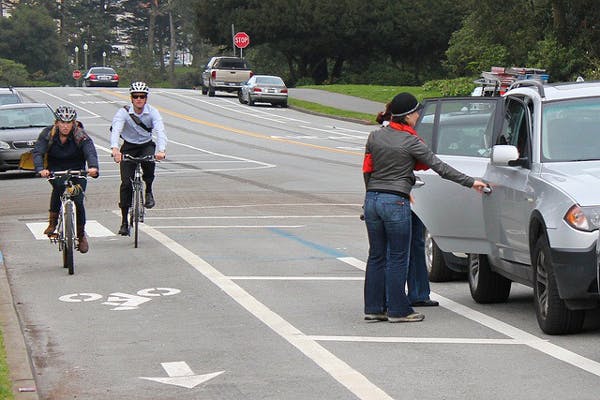Tech Talk: 19 beautiful ways to protect bike lanes (photos)
By: Zach Vanderkooy, Green Lane Project program manager
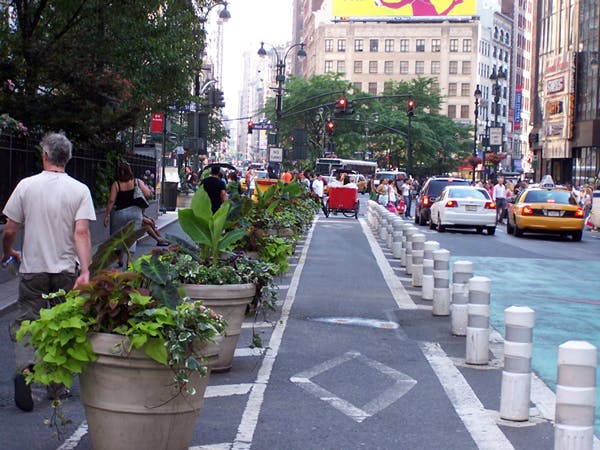
In the grammar of street design, bollards — those plastic posts that are used to block cars from entering many protected bike lanes — are the commas.
They’re simple. They’re versatile. They help organize complex traffic situations. And they’re often used incorrectly with no real consequence.
Modern protected bike lanes come in different shapes, styles and configurations. What makes them unique is the presence of some type of physical barrier between moving bikes and cars. Physical barriers for better bike lanes span the spectrum from temporary to permanent, from homely to beautiful, and from practical to whimsical.
Though bollards themselves come in many varieties, simple white ones have become the most popular choice thus far for American cities, due to their visibility, low cost, and ease of installation.
But white posts are only the beginning. Street designers think of them as a rough draft; a way of marking the space and testing how the street works. Flexibility is important in early design phases, so that the street is fine-tuned when the time comes to commit to a more permanent installation. What that ultimately looks like depends on many factors: budget, flexibility with design guidance, local experience, climate, maintenance practices, contextual aesthetics, and community priorities.
The good news is that when it comes to creative street design, the sky’s the limit. As protected bike lanes inch toward mainstream in America, we expect to see a surge in creativity for defining space on our streets. Curbs, fences, potted plants, a soldier’s leg, even places to sit and read the paper; all are being used to create a safe and pleasant places to ride a bike.
At their best, they clearly and safely organize the street, reflect the local character of the neighborhoods they move through and put a ‘you are here’ stamp on the urban environment that adds social and economic value.
Here are some other examples, both memorable and mundane, we’ve seen around the world:
Half-wheels in Seville, Spain
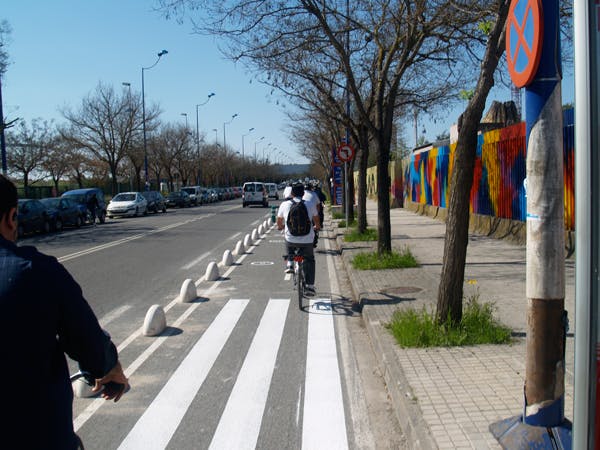
These convey motion and direction, while interacting easily with pedestrians.
Parked bikes in Rotterdam, Netherlands
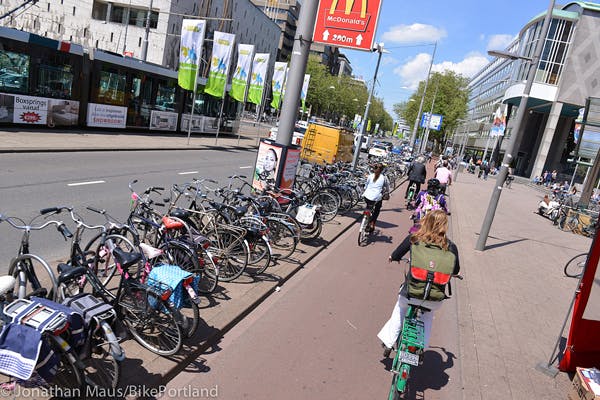
Now that’s an efficient use of space.
Public seating in New York, NY
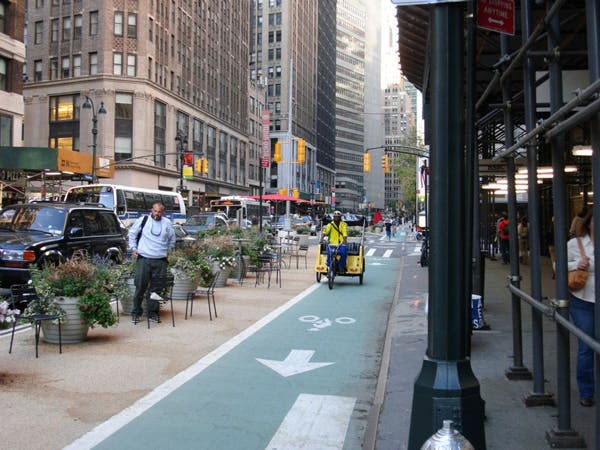
This probably wouldn’t work without the big planters, too.
Grass and trees in Copenhagen, Denmark
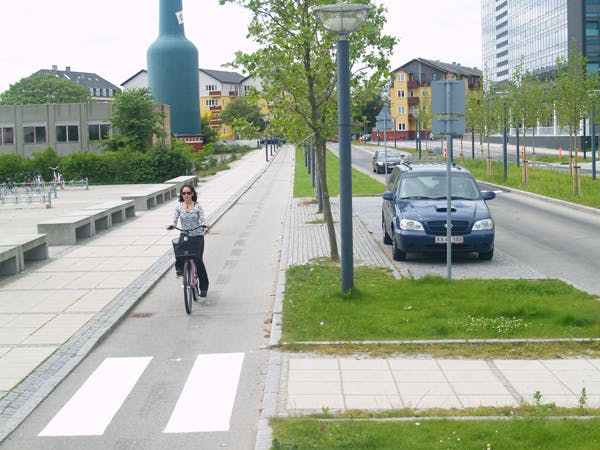
High fence in San Francisco, California
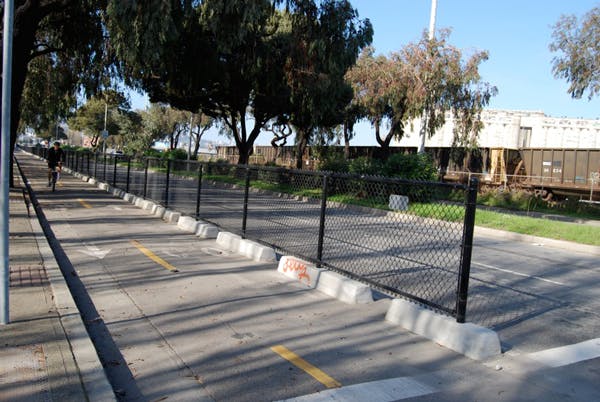
Rounded curb in Tilburg, Netherlands
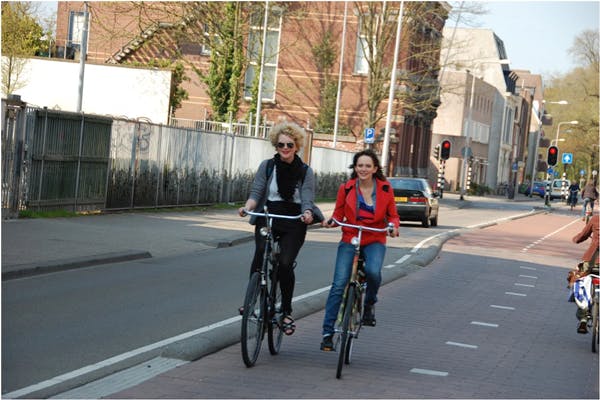
Houseplants in Kansas City, Missouri
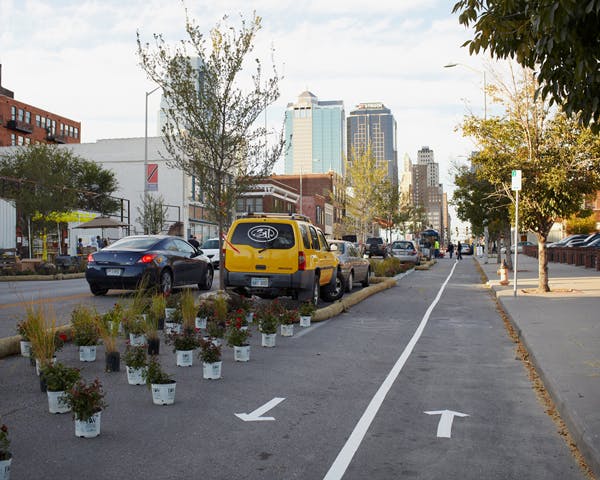
This was part of a temporary Better Block demonstration project.
Landscaping in Coronado, California
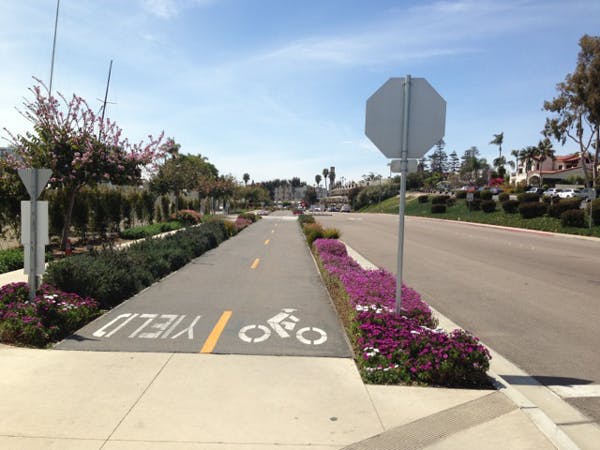
Modular curbs in Austin, Texas

Short thick bollards in New York, NY

Good ways to separate bike and pedestrian traffic could be a post of its own.
Just parked cars in San Francisco, California
